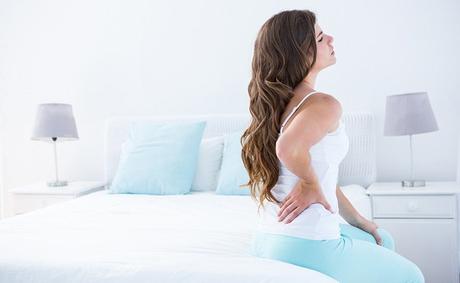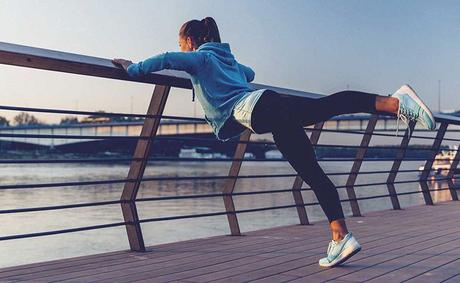Are you wondering what lateral pelvic tilt is all about? Don’t worry! You’re not alone. Many people do. And even after understanding it, few consider it a serious condition. Why? Because they associate it with old age and for a good reason; a good number of the seniors struggle in silence with this condition. They too think lateral pelvic tilt is a condition for the seniors. But is it true? I don’t think so.
We have unearthed the truth and all you need to know about lateral pelvic tilt here. Surprisingly you could be suffering from a mild one! It’s time you get to know the causes, symptoms, correction, and exercises to help rectify the condition. It’s never too late! Loaded with the below information, you will stand a better chance of correcting it and helping others with similar problem. However, these are NOT medical advises and please consult a doctor before you attempt any of the exercises recommended here. Let’s begin with the basic knowledge.
What is Lateral Pelvic Tilt?
You first need to know what pelvis is. The bone structure that sits on your legs and helps you to run, maintain a good posture and walk is what is referred to as pelvis. The pelvis is supposed to be parallel to the ground and your shoulders. Maybe you can begin by checking if yours are! Lateral pelvic tilt happens when one of your hips is a little bit higher than the other. Sometimes, the height difference is quite minimal that you can’t notice but others can. So, ask your friends how they see your “hip bones” or simply “hips” as they are commonly known. Are they uneven? But if you are shy, let’s see how you can find out on your own.
How to Know If Your Hips Are Uneven?

There are many ways to know if your hips are uneven
While Standing
Stand before a mirror. Let your left hand hold your left’s higher waistline. The right hand should also hold the right higher waistline. Now compare them with the floor. Is any of your hands farther from the ground than the other? If so then you have a lateral pelvic tilt.
While Moving
Stand before a mirror. Place your hands on either side of your waistline. Then stand on your left leg for 15 seconds. The other leg should be hanging in the air. Try to perform a squat with this single leg. Do the same with the right leg. Do you observe a change in your waist height? If so then you have lateral pelvic tilt.
Why is Lateral Pelvic Tilt a Course to Worry?
Though assumed by many, lateral pelvic tilt causes many postural issues. If you have a hip drop on the right-hand side, then your right leg joints will tend to slide a little from the ankle, the knee to the upper joint that connects the leg to the pelvis. Moreover, the left leg will raise a little to align with the left leg. With time the right hip and shoulder will continue raising as the left shoulder, and hip keep dropping. In addition, one of the legs will appear shorter than the other. As you age you will need support to enable you to balance your legs and body such as a walking stick.
What Are the Causes of Lateral Pelvic Tilt?
There are many causes of lateral pelvic tilt. Let’s find out a few.
Muscular Imbalances
Sometimes this condition can be caused by an imbalance of muscles such as glute, adductors and quadratus. Also, muscles such as obliques and tensor fascia latae can cause this imbalance which may result in a lateral pelvic tilt. For example, the hip will raise on the side where there is a weak glute muscle and tight the adductors and the quadratus lumborum. Moreover, a hip will drop where there’s a tight glute, weak adductors, and weak quadrates lumborum.
Bad Habits
Sometimes your bad habit can cause a lateral pelvic tilt. Before you wonder what could have caused this condition, ask yourself these questions:
- How do you stand? Leaning on one leg more than the other?
- Do you sit straight in a balanced position or with one butt more than the other?
- How do you sleep, on one side the whole night?
These questions will help you know the exact cause of your condition if it has resulted from your bad habits.
Leg Length Difference
If one of your legs is structurally shorter or longer than the other, then you are likely to have a lateral pelvic tilt. The side of the shorter leg will have a lower hip, and the other will have a higher one.
Neurological Problem
A health condition that may affect the nerves that serve the musculature of the pelvis can cause a lateral pelvic tilt.
Lateral Pelvic Tilt Symptoms

Hip and Back Pain
Hip and back pain can result from many causes. However, one of the causes could be laterally tilted pelvis although it comes as an afterthought. Many people will give different reasons for their backache or hip pain. But rarely will they associate it with the tilted pelvis. Besides, many people don’t know about this condition, and there is little information about it.
Unbalanced Walk
Yes! If you find yourself leaping for no good reason, then think about your pelvic health. Apply some of the methods discussed above to ascertain. You may not notice that you have an unbalanced walk but other people will. Therefore, before flashing their observation consider applying some methods to know if you have this condition.
Poor Positioning of Your Spine
As noted earlier on, lateral pelvic tilt causes many postural issues. Poor spine alignment is one problem that results from this condition. If your spine is not aligned correctly, then you will tend to bend as you walk. If you find yourself curving your back slightly forward as you walk, then consider determining if you have a laterally tilted pelvis.
Lateral pelvic tilt exercises: Home Workouts that Can Help

Note: Below are gentle and safe workouts you can comfortably practice at home. However, if you experience any pain or discomfort while performing any of them, discontinue.
Releases
Quadratus Lumborum
- Put a massage ball on Quadratus lumborum muscle
- Press the muscle by applying your entire body weight on the ball.
- Ensure that the whole muscle is pressed by rolling your body over the ball as it pushes the muscle.
- Do it for about 1-minute
Glute Medius
- Put a massage ball on your Glute medius.
- Press the muscle with the massage ball by lying on it with your entire weight as you put pressure on the muscle.
- Roll the ball over the whole length of the muscle.
- Do it for 1 minute.
Adductors
- Lie on your side and support your head with your palm.
- Put a foam roller below your adductors.
- Place the entire weight of your leg on the foam roller as it presses the muscle
- Ensure that the roller puts pressure on the whole adductor muscle.
Stretches
Obliques
- Put your feet wide apart. One of your foot should be turned to the opposite side. For example, the right foot turned out to the left side.
- Outstretch your arms and begin bending to the side. It means that one hand will touch your ankle while the other one will be high above your head.
- Ensure that your legs remain straight.
- Focus on experiencing a stretch on your side.
- Stay in that position for 25 seconds before performing the exercise in the opposite direction.
Glute Medius
- Sit up straight on the floor forming an arch on your back
- One of your legs should be crossed over the other.
- Pull the knee of the leg on top towards the shoulder on the opposite direction.
- Move your trunk to the knee on top.
- Focus at experiencing a stretch on one of the hips.
- Stay in that position for a while, say, 1 minute before repeating using the other leg.
Tensor Fascia Latae
- Begin by thrusting one of your legs while the other remains at the back
- Keep your feet in the same line
- Move your pelvis to the back
- Lean to one of your sides
- Focus on experiencing a stretch on one leg’s upper side.
- Stay in that position for about 1 minute.
- Switch legs and Repeat
Adductors
- Perform a side thrust towards one side.
- Focus on experiencing a deep stretch in one of your inner thigh.
- Hold the stretch for 1 minute before performing on the other leg.
Activation Workouts
Hip Raising
- Lie down on the floor or a mat with your stomach and head facing the ground. Your hands should support your head
- With tightened gluteus muscles and one leg straight, lift the other high in the air. Only the hip on the elevated leg should move. The other one should remain still.
- Hold the leg for about 5 seconds then lower it down
- Repeat the process 10 times.
- Then switch the legs and repeat the exercise.
Hip Raising While Standing
- Lean on a wall or a chair to get some balance.
- Stand straight as you tighten the muscles of your abdomen.
- Raise one of your legs behind you as high as possible and don’t arch your body.
- Then gradually lower your leg to the floor
- Repeat this workout 10 times before switching legs.
Hip Jerking
- Lie on your side and the floor with both your legs straight. One leg should lie on the other.
- Lift the upper leg in the air as far as you can.
- Your pelvis should not move but remain still. Only that leg should make movements.
- Focus on having your muscles activated.
- Let your leg stay in a raised position for 5 seconds
- Repeat this exercise 12 times
- Switch legs
Clamshell
- Lie on the side with your legs bending at an angle of 90 degrees. Support your head with your arm
- Keep your spine still and stable. Then slightly roll the hip on top.
- Now raise your knee but ensure that your feet are close to one another.
- Remain in this position for about 5 seconds before lowering your knee.
- Repeat the exercise for about 12 times
- Then switch sides.
Don’t rotate your spine to avoid back pain. The movements should be short and controlled. You can slightly change the position to work more muscles.
Strengthening Workout
This exercise aims to work all muscles at ago.
- Begin by lying on the floor near a wall
- Put your knees and hips at 90 degrees as your feet rest on the wall.
- Raise your tail bone away from the floor as your back lies flat.
- Put one of your knees forward and the other towards you.
- Aim at experiencing the tension.
- Hold on for about 15 seconds.
- Repeat this exercise 5 times
Take Away
Most of the home exercises illustrated above may not be very comfortable, but they are useful. Remember that it has taken you a long time to have your pelvic tilt to its current position. Therefore, it may take you a long time to rectify it. The secret is consistency. Choose the exercises you think will give you your desired results.
